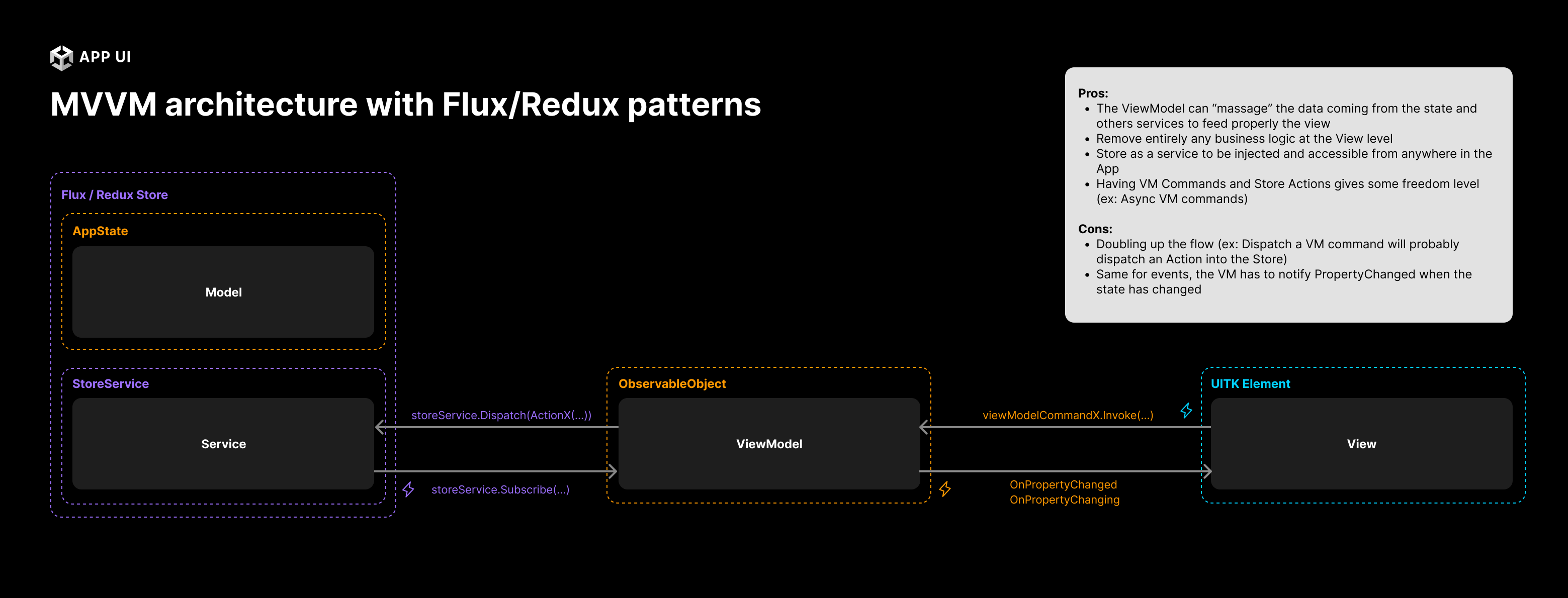Introduction to the MVVM Pattern
The MVVM pattern is a design pattern that helps to separate the user interface from the business logic. It is a common pattern used in many applications, and have been popularized by the WPF framework.
The way to architecture a project with UI Toolkit can become very similar to what is done with WPF. You usually end up with a markup file that contains the UI elements, and a code-behind file that contains the business logic. Both parts work together as a View.
Model
The Model is a simple Data Structure that contains the data that is used by your business logic.
ViewModel
The ViewModel is the class that contains the business logic. It is responsible for updating the Model when the user interacts with the View. It also contains the logic to update the View when the Model changes.
The ViewModel and the View are connected via Data Binding features.
View
The View is the part of the application that is responsible for displaying the data to the user. It is usually composed of UI elements. The view should not contain any business logic. The logic contained in the View should be related to the styling of the UI elements for example.
Using MVVM with state management
App UI implements a Redux-like state management system that can be used with the MVVM pattern.

For more information about the state management system, see State Management.
Additional Resources
For more information about the MVVM pattern, you can check the following resources: